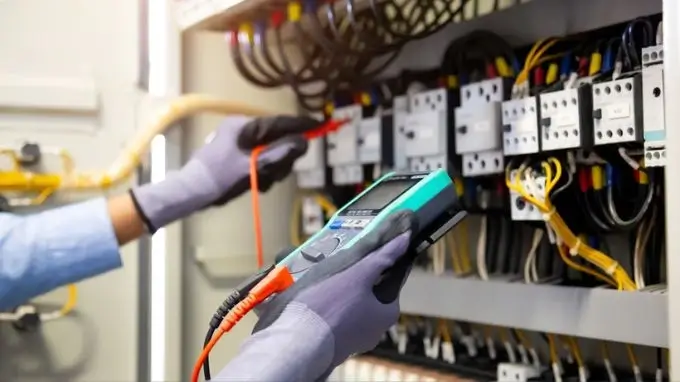Reliable electrical system troubleshooting services to ensure performance.
Reliable electrical system troubleshooting services to ensure performance.
Blog Article
Top Tips for Effective Electrical System Troubleshooting
Fixing electrical systems needs a systematic technique, grounded in an extensive understanding of electric principles and security procedures. By familiarizing oneself with circuit elements, using vital tools, and adhering to an organized analysis method, professionals can successfully recognize and fix issues. The nuances of effective repairing extend beyond plain technological understanding; understanding just how to document findings and focus on safety can substantially influence end results. As we explore these vital aspects additionally, it becomes clear that grasping this process is not just helpful yet essential for success in the field.
Understand the Basics
Comprehending the basics of electric systems is necessary for effective troubleshooting, as a solid structure allows technicians to diagnose and deal with issues more effectively. A comprehensive grasp of electric principles, such as voltage, current, resistance, and power, is crucial in identifying the origin causes of problems. Voltage is the electric possible distinction that drives current via a circuit, while resistance opposes the flow of current, influencing the general functionality of the system.
Experience with circuit elements, consisting of resistors, capacitors, diodes, and switches over, is additionally critical. Each component plays a distinct duty in circuit habits and can affect performance when malfunctioning. Additionally, comprehending series and identical circuit configurations is crucial, as these plans affect the distribution of voltage and present within the system.
Technicians must be mindful of prospective dangers, such as shock and short circuits, to apply risk-free troubleshooting techniques. By grasping these fundamental concepts, professionals improve their capacity to perform reliable diagnostics and repair services, inevitably leading to boosted performance and integrity of electric systems (electrical system troubleshooting).
Gather Necessary Equipment
Effective troubleshooting of electrical systems requires the best set of devices to identify and resolve problems properly. A well-equipped service technician can dramatically boost efficiency and effectiveness in determining issues. Essential tools consist of a multimeter, which gauges voltage, present, and resistance, enabling precise assessments of electric parts. Secure meters are likewise valuable for measuring present without detaching the circuit, making sure safety and convenience.
Additionally, shielded hand tools such as screwdrivers, pliers, and cord pole dancers are vital for securely adjusting electric links. It is likewise recommended to have a circuit tester accessible to verify the presence of voltage in electrical outlets and wires. For more facility systems, a thermal imaging video camera can assist spot overheating parts, indicating possible failures.

Adhere To a Methodical Strategy
Having actually collected the ideal tools, the next step in troubleshooting electric systems is to follow an organized method. A systematic method makes certain that service technicians can identify mistakes effectively here are the findings and precisely, lessening downtime and preventing unneeded repairs.
Begin by assessing the system's schematic layouts and requirements. Understanding the design and functional criteria will provide context for identifying problems. Next off, isolate the trouble location by utilizing a process of elimination. This includes monitoring each component methodically, starting from the power source and functioning towards the load.
Make use of screening tools, such as multimeters and oscilloscopes, to gather objective data regarding voltage, present, and resistance at hop over to here numerous factors within the system. This empirical evidence will direct your troubleshooting efforts and aid to validate or remove possible sources of failing.
Additionally, think about ecological aspects that may influence the system's efficiency, such as temperature fluctuations or wetness ingress. A comprehensive inspection of circuitry, connections, and elements will certainly make certain that all opportunities are made up.
File Your Searchings For
Complete paperwork is essential in the fixing process of electric systems. This technique not only aids in comprehending the origin cause of the issue yet additionally serves as a reference for future repairing efforts.

Additionally, maintaining a log of components replaced or repair work performed is invaluable. This information sustains inventory administration and can assist assess the long life and dependability of specific components.
Inevitably, the documentation procedure ought to be thorough yet succinct, allowing simple retrieval and review - electrical system troubleshooting. By prioritizing comprehensive documents, specialists can create a useful expertise base that not just aids in present troubleshooting but likewise equips future maintenance efforts, therefore improving general system dependability

Prioritize Precaution
Acknowledging the inherent dangers connected with electric systems is important for making certain safety throughout troubleshooting. Electrical shock, burns, and equipment damages are simply a few of the prospective threats that service technicians encounter. Focusing on precaution is not only a lawful responsibility however also a moral important that safeguards both the professional and the surrounding setting.
Prior to commencing any kind of troubleshooting job, professionals must don proper individual safety devices (PPE), including insulated gloves, security glasses, and flame-resistant clothes. Making sure that the workplace is dry and free of clutter can dramatically decrease the threat of mishaps. It is find here vital to de-energize circuits prior to beginning any kind of work, validating that they are not live with the usage of a multimeter or voltage tester.
Establishing clear communication procedures with employee is also essential; this makes certain that everybody knows prospective risks and the status of the electrical system being serviced. Last but not least, having an emergency situation feedback plan in location can verify invaluable in case of an incident. By prioritizing precaution, technicians can properly alleviate threats and cultivate a much safer office.
Verdict
Reliable electrical system fixing relies on an extensive understanding of basic principles and a methodical approach. Focusing on security steps makes certain the well-being of individuals included and the honesty of the electrical system.
Report this page